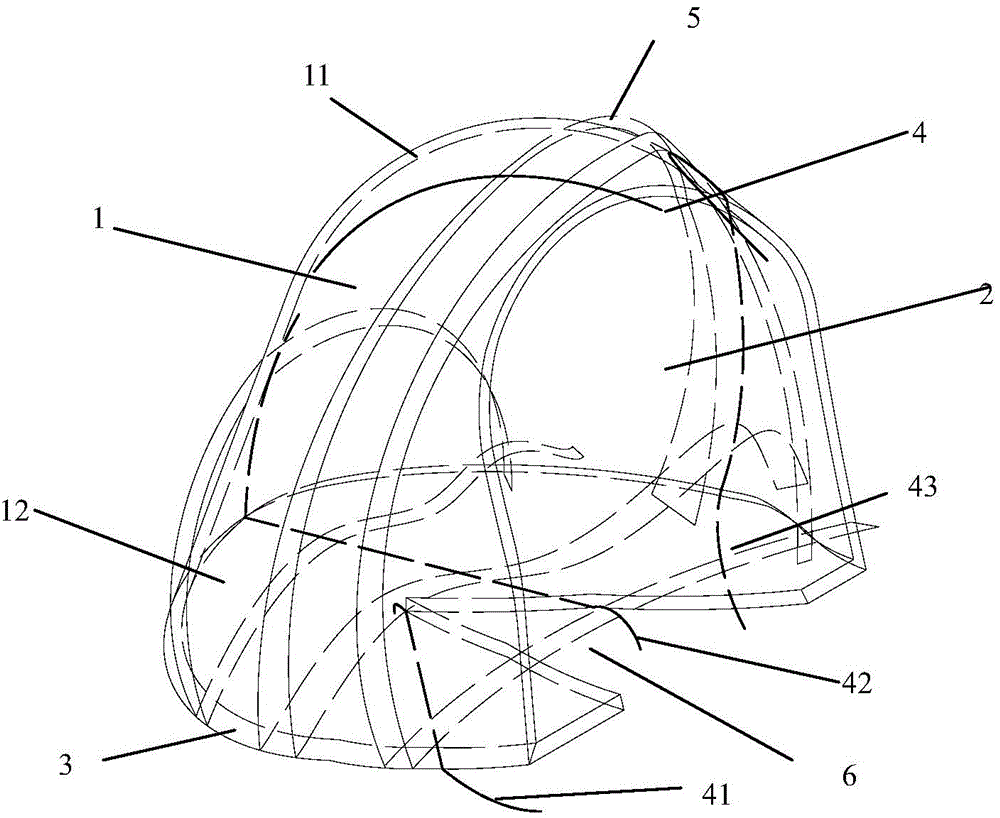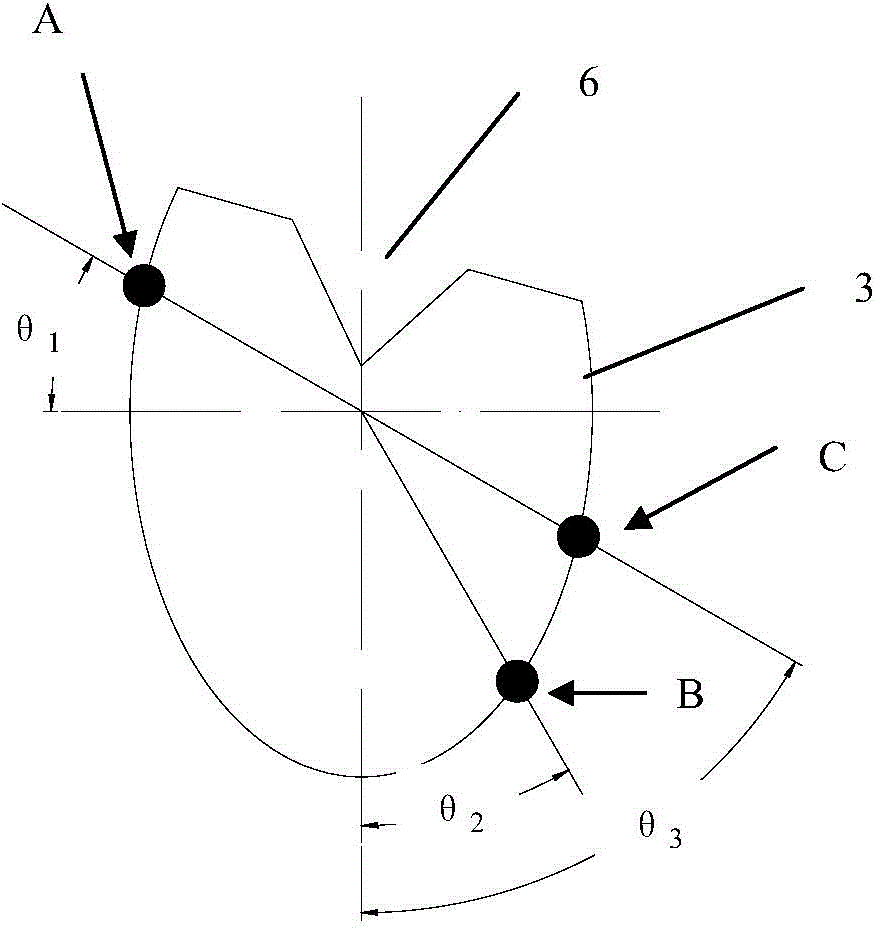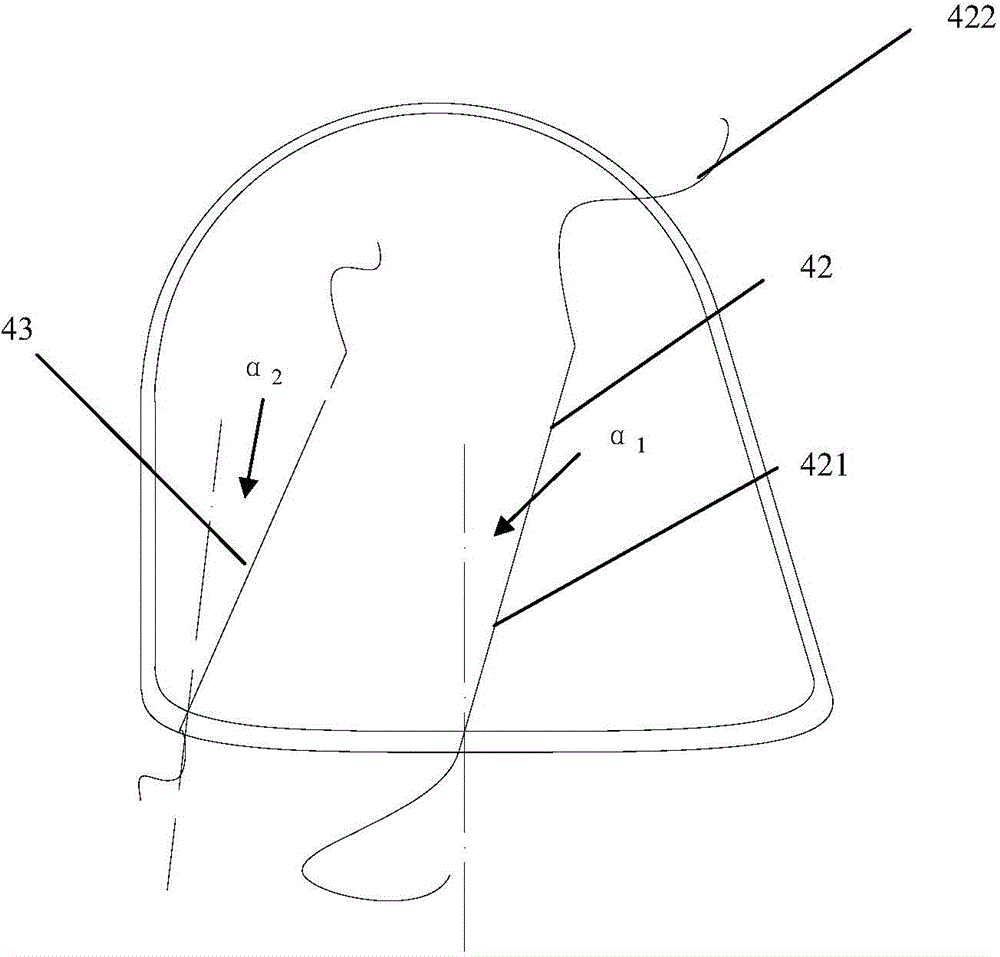Pressurizing blood-stopping device for liver trauma
A trauma and sleeve technology, applied in the direction of tourniquet, etc., can solve the problems of "wrapping mismatch pressure, wasting intraoperative resources, increasing intraoperative risk, etc., to avoid excessive dissociation, strengthen compression, and reduce surgical trauma.
- Summary
- Abstract
- Description
- Claims
- Application Information
AI Technical Summary
Problems solved by technology
Method used
Image
Examples
Embodiment 1
[0053] Such as Figure 1~3 As shown, a pressurized hemostatic right side sleeve for hepatic trauma has a sleeve body 1 as a whole, and the sleeve body is composed of a curved diaphragm surface layer 11 and a flat visceral surface layer 12. The edges are sutured to form the edge 3 of the sleeve body. The edge 3 is an incomplete ellipse, and the unsewn side is the sleeve opening 2. The cross section of the sleeve body 1 is arched, which is roughly the same shape as the liver. The sleeve body can cover the right liver and the liver. The inner lobe of the left liver has a V-shaped notch 6 on the visceral surface of the sleeve body. When the right side sleeve covers the right liver, the hilar blood vessels and biliary tract can pass through the sleeve body 1 through the V-shaped notch 6 . The positions of the absorbing pressurized dry trauma hemostasis sleeve on the right side are defined according to the position of the liver. The sleeve diaphragm surface layer 11 corresponds to t...
Embodiment 2
[0056] As shown in the figure, there is a pressurized hemostatic right side sleeve for hepatic trauma, and the rest is the same as in Embodiment 1. There are three positioning lines 4 and three fastening straps 5 on the right sleeve, wherein the second fastening strap 52 and The third fastening belt 53 is distributed on the peripheral surface of the sleeve body 1 on both sides of the first fastening belt 51 . Three positioning lines 4 and three fastening straps 5 can achieve the best hemostatic fixation effect. The drawing section of the second positioning line 42 is fixed obliquely to the outside along the tangent line of the dirty surface at 8°, and the drawing section of the third positioning line 43 is fixed obliquely to the outside along the tangent line of the dirty surface at 8°.
Embodiment 3
[0058] As shown in the figure, a pressurized hemostatic left sleeve for hepatic trauma has a sleeve body 1 as a whole, and the sleeve body is composed of a curved diaphragm surface layer 11 and a flat visceral surface layer 12, and the visceral surface layer 12 is an incomplete ellipse The diaphragm surface layer 11 is sutured along the curved edge of the visceral surface layer 12 to form the edge 3 of the sleeve body 1. The opening is the sleeve mouth 2. The cross section of the sleeve body 1 is slightly arched, which is roughly the same shape as the liver. The sleeve body 1 May cover the lateral lobe of the left liver. The positions of the absorbing pressurized dry trauma hemostasis sleeve on the left side are defined according to the position of the liver. The diaphragm surface layer 11 of the sleeve body corresponds to the diaphragmatic surface of the liver, and the visceral surface layer 12 of the sleeve body corresponds to the visceral surface of the liver. The orientati...
PUM
 Login to View More
Login to View More Abstract
Description
Claims
Application Information
 Login to View More
Login to View More - R&D
- Intellectual Property
- Life Sciences
- Materials
- Tech Scout
- Unparalleled Data Quality
- Higher Quality Content
- 60% Fewer Hallucinations
Browse by: Latest US Patents, China's latest patents, Technical Efficacy Thesaurus, Application Domain, Technology Topic, Popular Technical Reports.
© 2025 PatSnap. All rights reserved.Legal|Privacy policy|Modern Slavery Act Transparency Statement|Sitemap|About US| Contact US: help@patsnap.com



